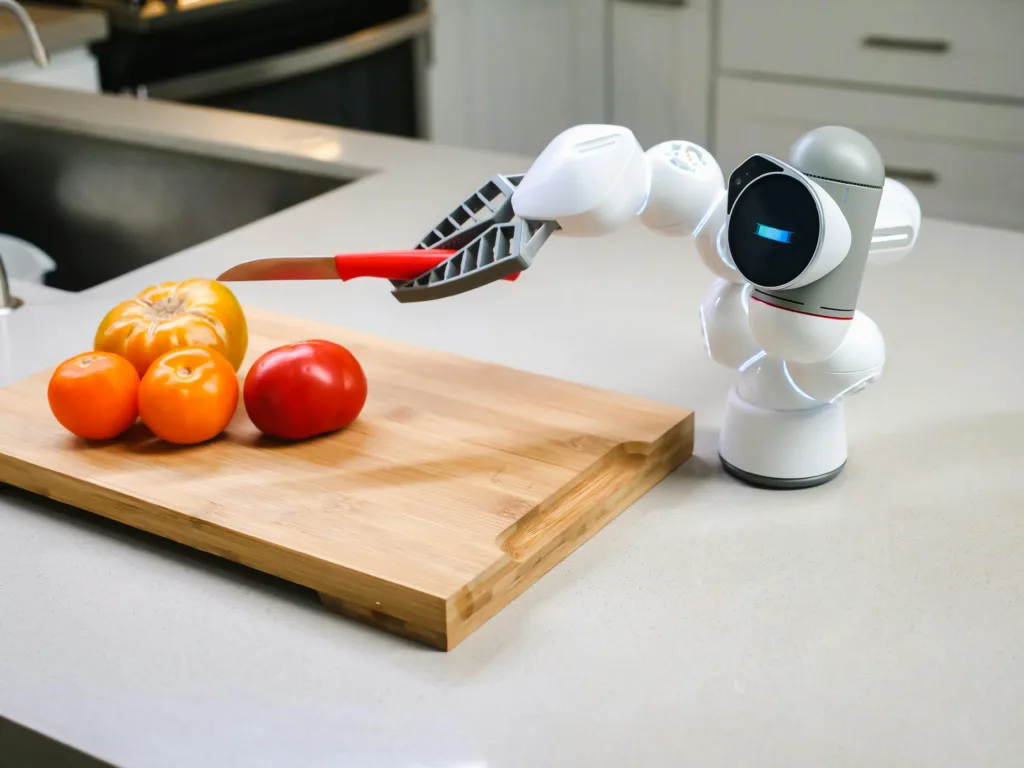
As energy consumption continues to grow and emissions of carbon pollutants continue to rise, green-tech-aware homeowners are turning to green technology as a way for wiser, cleaner living. From solar panels to smart thermostats, new technologies open up more possibility than ever before to lower your home’s footprint and raise convenience, efficiency, and even savings.
This piece explores the most impactful green technologies for the home, their benefits, how they work, and how you can bring them into your life to lower your carbon footprint—without losing comfort.
1. The Environmental Imperative: Why Green Tech at Home Matters
Before diving into the technologies themselves, it’s important to understand the environmental footprint of the average home. According to the U.S. Environmental Protection Agency (EPA), residential buildings contribute roughly 20% of total greenhouse gas emissions, primarily through electricity use, heating, cooling, and water usage.
The modern home consumes vast amounts of energy for lighting, cooking, laundry, and entertainment—most of which still comes from fossil fuels. Combine that with water waste, poor insulation, and outdated appliances, and the result is a carbon-intensive lifestyle.
Green home technologies aim to minimize this footprint through:
- Energy efficiency
- Renewable energy adoption
- Smart automation
- Sustainable materials and design
2. Solar Power: Clean Energy from the Sun
One of the most transformative green technologies for homes is solar energy. Installing photovoltaic (PV) solar panels on your roof allows you to generate your own electricity from sunlight.
Benefits of Home Solar Systems:
- Clean energy source: Reduces reliance on coal and natural gas
- Long-term savings: Lower electricity bills; ROI typically achieved in 7–10 years
- Incentives and rebates: Many governments offer tax credits and subsidies
- Energy independence: Less vulnerability to grid outages and rate hikes
Battery Storage:
Paired with a home battery (e.g., Tesla Powerwall), excess solar energy can be stored for use at night or during cloudy days, maximizing efficiency.
3. Smart Thermostats: Efficient Climate Control
Heating and cooling account for nearly 50% of a household’s energy use, making HVAC systems a major contributor to carbon emissions. Enter the smart thermostat—a compact device that learns your schedule and adjusts temperature settings automatically to minimize energy waste.
Popular Smart Thermostats:
- Google Nest
- ecobee
- Honeywell Lyric
Features to Look For:
- Geofencing (adjusts based on whether you’re home)
- AI learning for temperature preferences
- Remote control via smartphone apps
- Integration with home automation systems
According to Energy Star, smart thermostats can save users up to 10–15% annually on heating and cooling costs.
4. Energy-Efficient Appliances
Appliances like refrigerators, dishwashers, washing machines, and dryers are essential, but they also consume a significant amount of electricity and water. Modern Energy Star-rated appliances are designed to operate using the least possible energy without sacrificing performance.
Key Examples:
- Refrigerators: New models use up to 40% less energy than those made before 2001.
- Dishwashers: Use less water and adjust cycles based on load.
- Heat pump dryers: Consume 28–60% less energy than conventional dryers.
When upgrading, always look for EnergyGuide labels and water-saving features such as low-flow modes and load sensors.
5. Smart Lighting and Controls
Lighting accounts for roughly 15% of a home’s electricity bill. Switching to LED lights and adding smart lighting systems can significantly reduce that number.
Benefits:
- Use up to 80% less energy than incandescent bulbs
- Last 15–25 times longer
- Can be automated with schedules, motion sensors, and dimming
Smart Lighting Brands:
- Philips Hue
- LIFX
- Sengled
Using a centralized smart home hub, you can integrate lighting with other systems like security and entertainment for seamless, efficient control.
6. Water Conservation Technology
Water scarcity is a growing issue globally, and residential usage is a major contributor. Green tech helps conserve water through smart irrigation systems, low-flow plumbing fixtures, and water monitoring devices.
Key Solutions:
- Smart irrigation: Systems like Rachio adjust watering schedules based on weather and soil moisture.
- Low-flow showerheads and toilets: Reduce water usage by up to 60%.
- Greywater recycling systems: Capture and reuse water from sinks and showers for irrigation.
A family of four can save up to 10,000 gallons of water annually with smart water tech.
7. Home Insulation and Energy Sealing
While not high-tech in the traditional sense, effective insulation and air sealing are crucial for green living. Many modern materials and techniques now qualify as “green tech” due to their efficiency and eco-friendliness.
Advanced Insulation Options:
- Spray foam insulation: Creates airtight seals
- Cellulose insulation: Made from recycled materials
- Thermal barrier coatings: Reflect heat and light
Combining insulation with energy-efficient windows and doors ensures your home stays warmer in winter and cooler in summer—using less energy.
8. Smart Power Strips and Energy Monitoring
Many electronics continue to draw power even when turned off—a phenomenon known as phantom load or vampire power. Smart power strips can eliminate this by automatically cutting power when devices are idle.
Meanwhile, home energy monitors like Sense or Emporia Vue give you real-time feedback on your energy consumption, identifying which appliances are the most power-hungry and when.
Benefits:
- Reduces standby power by up to 30%
- Promotes energy awareness
- Helps you build better usage habits
9. Green Building Materials and Furnishings
If you’re renovating or building a new home, choosing sustainable materials makes a huge difference. Green materials are renewable, non-toxic, recyclable, and often locally sourced.
Eco-Friendly Options Include:
- Bamboo flooring: Renewable and durable
- Recycled glass countertops
- Low-VOC paints and adhesives
- Insulated concrete forms (ICFs)
Even furnishings can be green—look for certifications like Greenguard or Forest Stewardship Council (FSC) to ensure products meet eco-standards.
10. Whole-Home Automation for Sustainable Living
Smart home platforms like Apple HomeKit, Amazon Alexa, or Samsung SmartThings allow you to integrate and automate green tech systems across your home.
Example Automation Scenarios:
- Lights turn off when no one is in the room
- Thermostat adjusts when you leave the house
- Irrigation system delays watering if rain is forecast
- Solar battery prioritizes charging during peak sunlight
These platforms make sustainable living seamless and intuitive.
11. Electric Vehicle (EV) Integration
If you own an electric vehicle, installing a home EV charging station powered by solar energy creates a closed-loop clean transportation system.
Benefits:
- Reduce transportation-related emissions (which account for ~29% of U.S. emissions)
- Save on fuel costs
- Leverage time-of-use charging for off-peak energy rates
Some systems even allow bi-directional charging, where your EV can serve as a backup power source for your home during outages.
12. The Economic Case for Green Tech at Home
Although some green technologies require upfront investment, they often pay for themselves through:
- Lower utility bills
- Government incentives and rebates
- Increased home resale value
- Reduced maintenance and replacement costs
According to a report by the National Association of Realtors, homes with green certifications sell faster and at higher prices. Solar panels alone can increase home value by 4.1% on average.
13. Overcoming Barriers and Getting Started
Many homeowners hesitate to adopt green tech due to perceived costs, complexity, or lack of information. Here’s how to get started:
Step-by-Step Guide:
- Conduct an energy audit – Identify where energy is wasted.
- Start with easy wins – LED lights, smart plugs, low-flow fixtures.
- Upgrade appliances gradually – Replace old models with Energy Star versions.
- Set a budget and prioritize – Invest in high-ROI improvements like insulation or smart thermostats.
- Apply for rebates and tax incentives – Local governments, utilities, and federal programs can offset costs.
Conclusion: A Greener, Smarter, Better Home
Green technology isn’t about sacrificing comfort or convenience. On the contrary, it’s about making your home smarter, healthier, and more cost-efficient, all while reducing your impact on the planet.
From generating your own electricity and conserving water to automating your thermostat and lighting, there are countless ways to align your living space with your values. As these technologies become more accessible and affordable, the future of green living isn’t just possible—it’s already here.
Embrace the change. Go green. Live smart.





